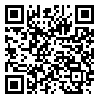Volume 14, Issue 1 (January & February 2023)
BCN 2023, 14(1): 43-56 |
Back to browse issues page
Download citation:
BibTeX | RIS | EndNote | Medlars | ProCite | Reference Manager | RefWorks
Send citation to:



BibTeX | RIS | EndNote | Medlars | ProCite | Reference Manager | RefWorks
Send citation to:
Younessi Heravi M A, Maghooli K, Nowshiravan Rahatabad F, Rezaee R. A New Nonlinear Autoregressive Exogenous (NARX)-based Intra-spinal Stimulation Approach to Decode Brain Electrical Activity for Restoration of Leg Movement in Spinally-injured Rabbits. BCN 2023; 14 (1) :43-56
URL: http://bcn.iums.ac.ir/article-1-2327-en.html
URL: http://bcn.iums.ac.ir/article-1-2327-en.html
Mohamad Amin Younessi Heravi *1 

 , Keivan Maghooli2
, Keivan Maghooli2 

 , Fereidoun Nowshiravan Rahatabad2
, Fereidoun Nowshiravan Rahatabad2 

 , Ramin Rezaee3
, Ramin Rezaee3 




 , Keivan Maghooli2
, Keivan Maghooli2 

 , Fereidoun Nowshiravan Rahatabad2
, Fereidoun Nowshiravan Rahatabad2 

 , Ramin Rezaee3
, Ramin Rezaee3 


1- Department of Medical Physics and Radiology, North Khorasan University of Medical Sciences, Bojnurd, Iran.
2- Department of Biomedical Engineering, Science and Research Branch, Islamic Azad University, Tehran, Iran.
3- International UNESCO Center for Health-related Basic Sciences and Human Nutrition, Faculty of Medicine, Mashhad University of Medical Sciences, Mashhad, Iran.; Applied Biomedical Research Center, Mashhad University of Medical Sciences, Mashhad, Iran.
2- Department of Biomedical Engineering, Science and Research Branch, Islamic Azad University, Tehran, Iran.
3- International UNESCO Center for Health-related Basic Sciences and Human Nutrition, Faculty of Medicine, Mashhad University of Medical Sciences, Mashhad, Iran.; Applied Biomedical Research Center, Mashhad University of Medical Sciences, Mashhad, Iran.
Abstract:
Introduction: This study aimed at investigating the stimulation by intra-spinal signals decoded from electrocorticography (ECoG) assessments to restore the movements of the leg in an animal model of spinal cord injury (SCI).
Methods: The present work is comprised of three steps. First, ECoG signals and the associated leg joint changes (hip, knee, and ankle) in sedated healthy rabbits were recorded in different trials. Second, an appropriate set of intra-spinal electric stimuli was discovered to restore natural leg movements, using the three leg joint movements under a fuzzy-controlled strategy in spinally-injured rabbits under anesthesia. Third, a nonlinear autoregressive exogenous (NARX) neural network model was developed to produce appropriate intra-spinal stimulation developed from decoded ECoG information. The model was able to correlate the ECoG signal data to the intra-spinal stimulation data and finally, induced desired leg movements. In this study, leg movements were also developed from offline ECoG signals (deciphered from rabbits that were not injured) as well as online ECoG data (extracted from the same rabbit after SCI induction).
Results: Based on our data, the correlation coefficient was 0.74±0.15 and the normalized root means square error of the brain-spine interface was 0.22±0.10.
Conclusion: Overall, we found that using NARX, appropriate information from ECoG recordings can be extracted and used for the generation of proper intra-spinal electric stimulations for restoration of natural leg movements lost due to SCI.
Methods: The present work is comprised of three steps. First, ECoG signals and the associated leg joint changes (hip, knee, and ankle) in sedated healthy rabbits were recorded in different trials. Second, an appropriate set of intra-spinal electric stimuli was discovered to restore natural leg movements, using the three leg joint movements under a fuzzy-controlled strategy in spinally-injured rabbits under anesthesia. Third, a nonlinear autoregressive exogenous (NARX) neural network model was developed to produce appropriate intra-spinal stimulation developed from decoded ECoG information. The model was able to correlate the ECoG signal data to the intra-spinal stimulation data and finally, induced desired leg movements. In this study, leg movements were also developed from offline ECoG signals (deciphered from rabbits that were not injured) as well as online ECoG data (extracted from the same rabbit after SCI induction).
Results: Based on our data, the correlation coefficient was 0.74±0.15 and the normalized root means square error of the brain-spine interface was 0.22±0.10.
Conclusion: Overall, we found that using NARX, appropriate information from ECoG recordings can be extracted and used for the generation of proper intra-spinal electric stimulations for restoration of natural leg movements lost due to SCI.
Type of Study: Original |
Subject:
Computational Neuroscience
Received: 2021/10/25 | Accepted: 2022/03/8 | Published: 2023/01/1
Received: 2021/10/25 | Accepted: 2022/03/8 | Published: 2023/01/1
Send email to the article author
| Rights and permissions | |
 |
This work is licensed under a Creative Commons Attribution-NonCommercial 4.0 International License. |





